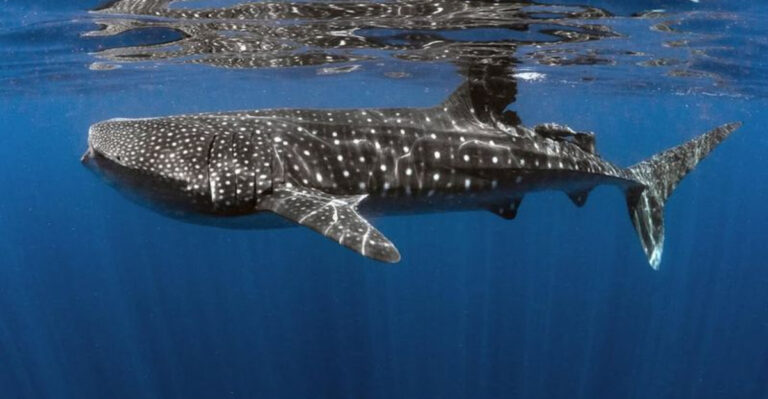26 Ocean Animals With Extraordinary Abilities To Adapt And Survive
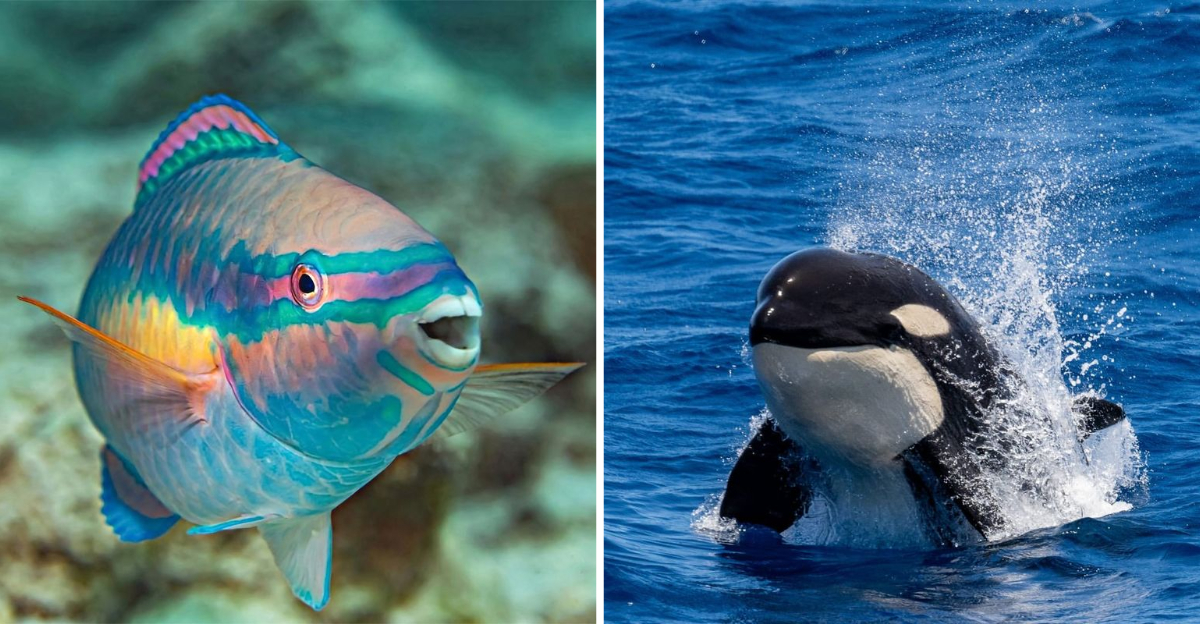
The ocean is a vast and mysterious place, home to some of the most fascinating creatures on Earth. These ocean animals have developed extraordinary abilities to adapt and survive in their underwater world.
From the deepest depths to the sunlit surface, each species has unique adaptations that make them truly remarkable.
1. Mimic Octopus
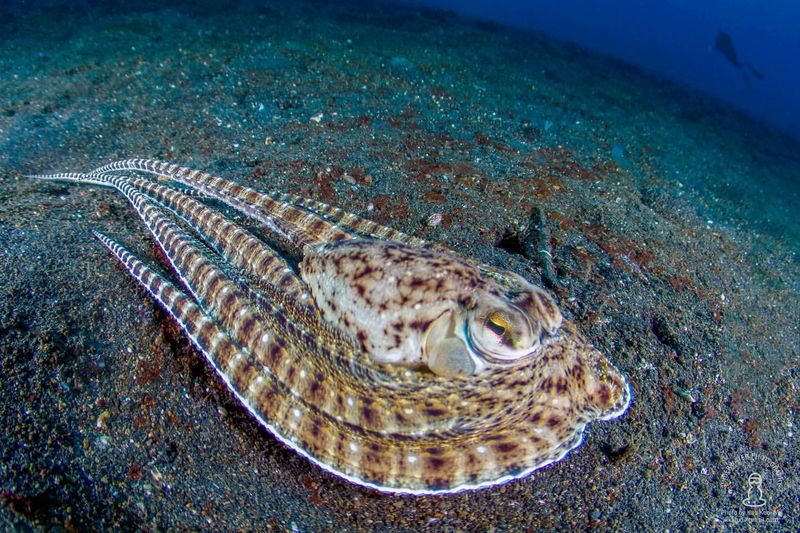
In the colorful world of coral reefs, the mimic octopus is a master of disguise. With the ability to impersonate up to 15 different marine species, this crafty cephalopod can imitate flounders, lionfish, and even sea snakes.
Its talent for mimicry serves as a defense mechanism against predators, allowing it to slip away unnoticed. The mimic octopus doesn’t just change its shape; it can also alter its color and texture to blend seamlessly with its surroundings.
This remarkable skill is achieved by controlling specialized skin cells called chromatophores. By expanding or contracting these cells, the mimic octopus can produce a wide range of colors and patterns.
With such a diverse wardrobe, the mimic octopus is truly the fashionista of the ocean. Its ability to adapt quickly to changing environments makes it one of the most intriguing creatures in the ocean’s repertoire.
2. Pufferfish
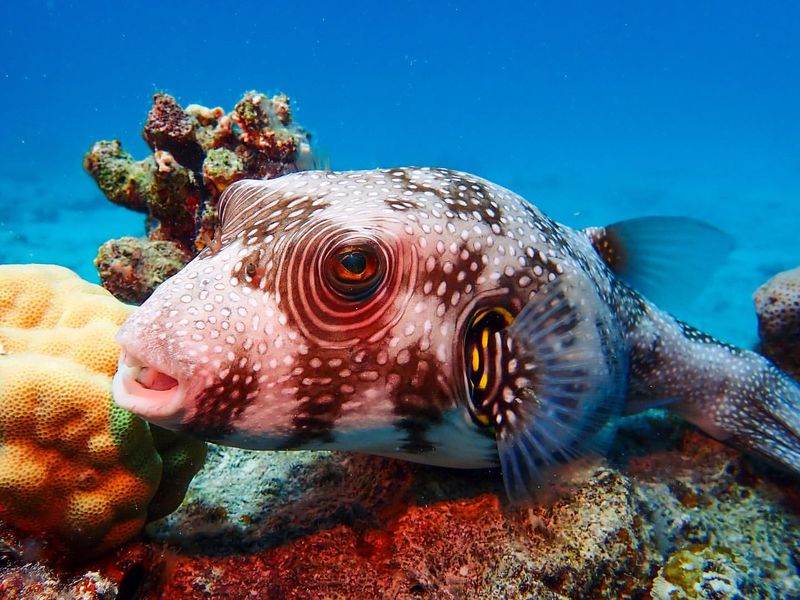
In the bustling underwater city of coral reefs, the pufferfish has a unique party trick up its sleeve. When threatened, this fish can inflate itself into a spiky ball, making it difficult for predators to take a bite. This defense mechanism is both amusing and effective, providing the pufferfish with a quirky way to stay safe.
But the pufferfish doesn’t rely solely on its inflatable antics. Its skin contains tetrodotoxin, a potent poison that deters all but the most determined attackers. This toxin is deadly to many marine creatures, making the pufferfish a tough target.
Despite its formidable defenses, the pufferfish is an artist at heart, often seen creating intricate sand patterns on the ocean floor. This behavior, part of its courtship ritual, demonstrates that even the most armored creatures have a softer side.
3. Sea Cucumber
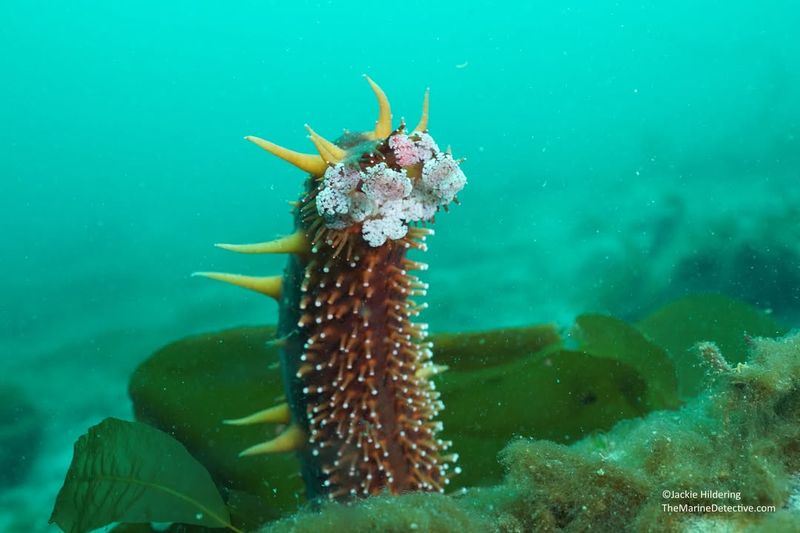
In the sandy depths of the ocean, the sea cucumber practices an unusual form of self-defense. When threatened, it can expel its internal organs to deter predators, a move both shocking and effective. Fear not, for these organs regenerate, making the sea cucumber a master of resilience.
These echinoderms play an essential role in the marine ecosystem, acting as the ocean’s vacuum cleaners. By processing sand and debris, sea cucumbers help maintain the cleanliness of the ocean floor. Their unique digestive abilities contribute to nutrient recycling, supporting the delicate balance of marine life.
With a defense strategy that involves a bit of shock and awe, the sea cucumber proves that sometimes, being a little unorthodox is the key to survival. Its ability to adapt and thrive in various ocean conditions makes it a vital and intriguing part of the underwater world.
4. Anglerfish
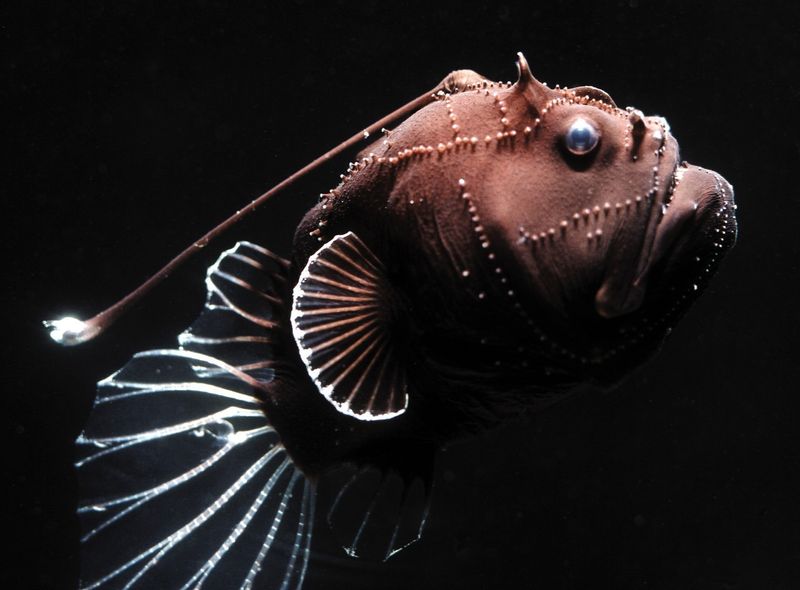
In the mysterious depths of the ocean, the anglerfish lurks with a trick up its sleeve. This deep-sea predator has a glowing lure protruding from its head, used to attract unsuspecting prey. In the pitch-black abyss, this bioluminescent beacon is a trap that few can resist.
The anglerfish’s bizarre appearance is matched by its unique reproductive strategy. Males are significantly smaller and attach themselves to females, becoming permanent mates. This quirky relationship ensures that when love is in the air, the anglerfish is always ready.
Despite its fearsome appearance, the anglerfish is a master of adaptation, thriving in an environment where few can survive. Its ability to blend into the dark waters and use light to its advantage makes it one of the ocean’s most extraordinary creatures.
5. Flying Fish
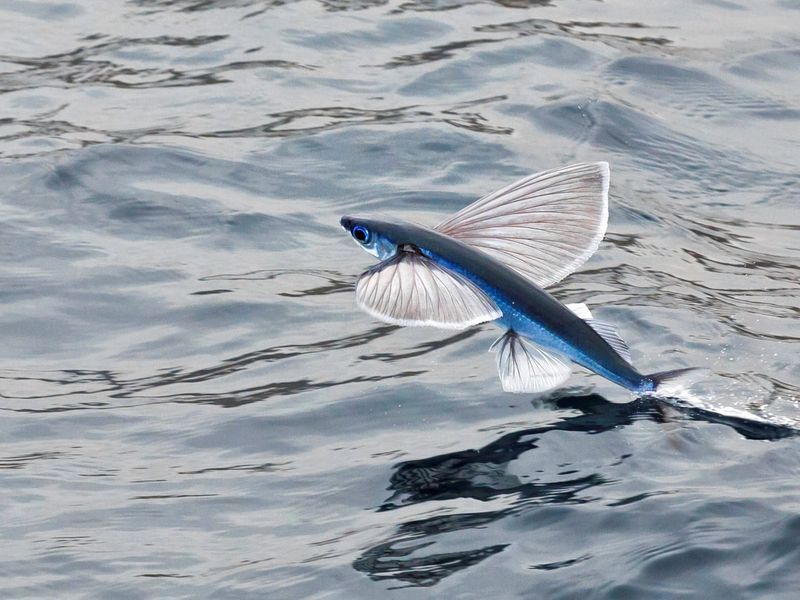
Skimming the ocean’s surface, the flying fish takes to the skies in a spectacular display of acrobatics. By using its specially adapted fins, it can glide above the water for up to hundreds of meters. This airborne maneuver is an effective escape from predators lurking below.
The flying fish’s gliding ability is not just for show. In a world where survival is paramount, these fish have evolved to outsmart their aquatic foes. Their sleek bodies and powerful tails enable them to propel out of the water with grace and agility.
These feats of flight make the flying fish a marvel of the ocean, leaving onlookers in awe of its aerial prowess. In the vast expanse of the sea, its ability to soar offers a unique perspective on the endless possibilities of adaptation.
6. Box Jellyfish
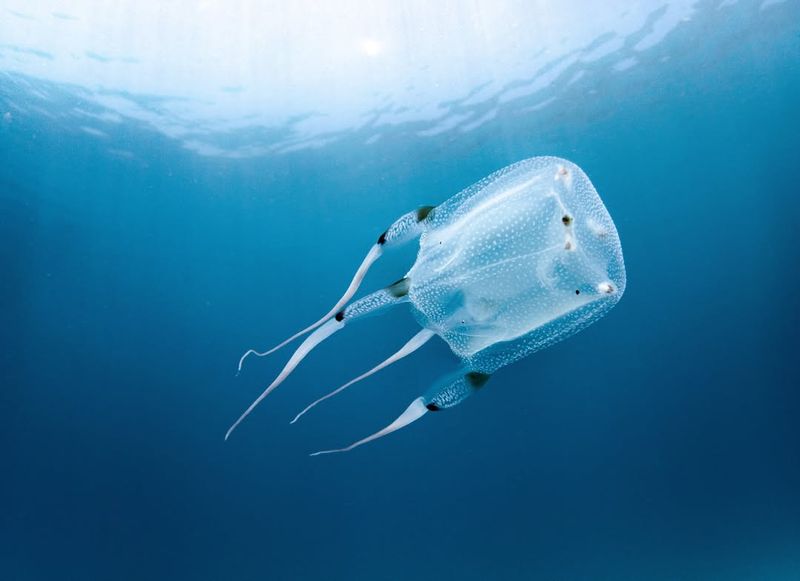
In the serene waters of the ocean, the box jellyfish floats with deceptive grace. Yet, beneath its delicate appearance lies one of the most potent venoms in the animal kingdom. This jellyfish’s tentacles are lined with specialized cells that deliver a painful and potentially deadly sting.
Despite its lethal capabilities, the box jellyfish is a creature of beauty. Its translucent body allows it to blend seamlessly with the surrounding water, making it a stealthy hunter. This invisibility cloak ensures that prey never sees it coming.
With such a dangerous reputation, the box jellyfish is both feared and revered. Its ability to thrive in the ocean’s varied environments showcases the remarkable adaptability of this enigmatic creature.
7. Electric Eel
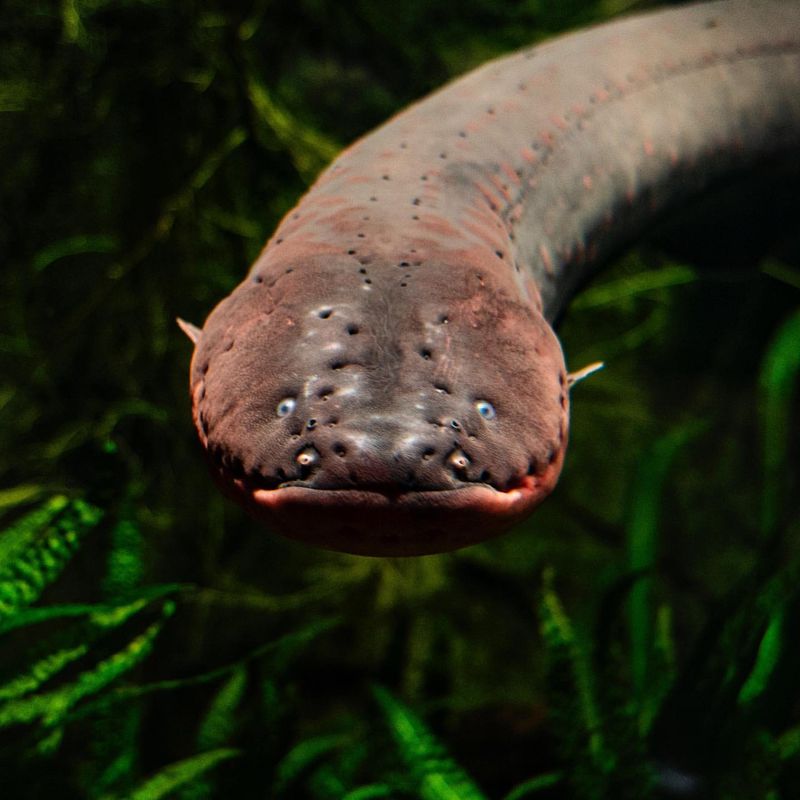
In the murky waters of rivers and swamps, the electric eel stands out as a powerhouse of nature. This remarkable fish can generate electricity, using it to hunt and defend against predators. Its shocking abilities make it one of the most electrifying creatures in the aquatic world.
The electric eel’s specialized organs produce voltages strong enough to stun prey or deter would-be attackers. This unique talent provides both offense and defense, ensuring the eel’s dominance in its habitat.
Beyond its shocking prowess, the electric eel’s adaptability to diverse environments makes it a fascinating study of nature’s ingenuity. It thrives where others struggle, using its electrifying skills to navigate the challenges of its watery realm.
8. Goblin Shark
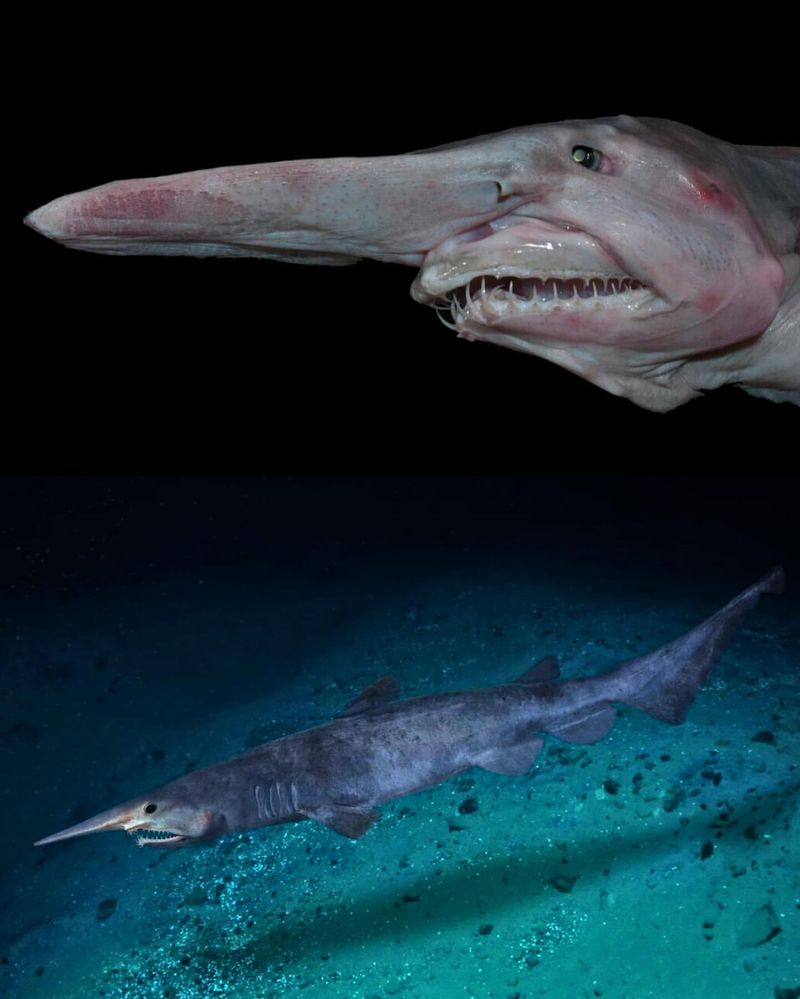
In the shadowy depths of the ocean, the goblin shark is a true enigma. With its elongated snout and razor-sharp teeth, this deep-sea predator has a face only a mother could love. Yet, its peculiar appearance makes it a standout in the underwater world.
The goblin shark’s unique features are not just for show. Its protruding jaws can extend to catch unsuspecting prey with speed and precision. This adaptation allows it to hunt in the dark depths where food is scarce.
Despite its fearsome looks, the goblin shark is a testament to the ocean’s diversity and adaptability. Its ability to thrive in the deep sea’s challenging conditions makes it a fascinating subject of scientific study and a reminder of the mysteries that lie beneath the waves.
9. Hammerhead Shark
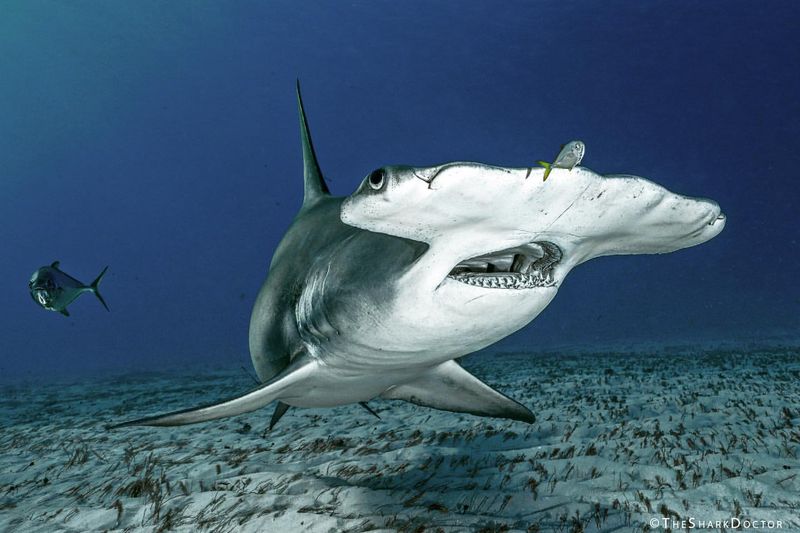
With a head shaped like a hammer, the hammerhead shark cuts an unmistakable figure in the ocean. This unique adaptation offers enhanced vision, allowing the shark to scan vast areas with ease. Its eyes, positioned on either side of its head, provide a 360-degree view of its surroundings.
This unusual head shape is not just about aesthetics. It aids in detecting electrical signals from prey, enhancing the hammerhead’s hunting prowess. This sensory advantage makes it a formidable predator in the marine world.
Beyond its striking appearance, the hammerhead shark’s adaptability to various ocean habitats highlights its evolutionary success. It embodies the perfect blend of form and function, showcasing nature’s creativity in crafting species that thrive against the odds.
10. Leafy Sea Dragon
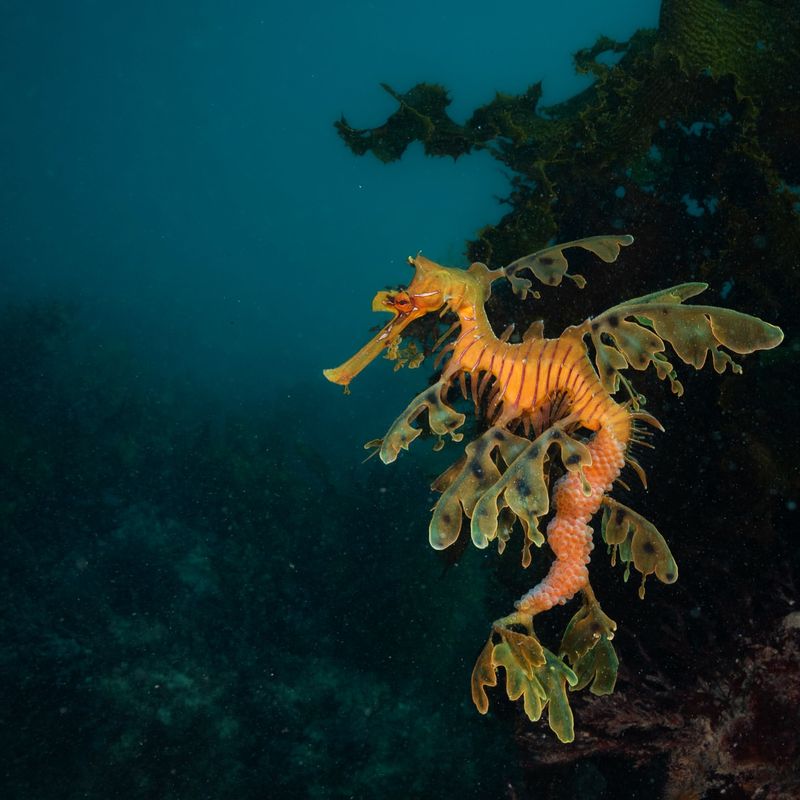
In the lush underwater gardens of seaweed, the leafy sea dragon floats with an elegance befitting its name. With ornate leaf-like appendages, this fish is a master of camouflage, blending seamlessly into its seaweed surroundings.
The leafy sea dragon’s delicate design is its greatest strength. By mimicking the appearance of seaweed, it avoids detection by predators. This natural disguise is a testament to the power of evolution in crafting creatures that survive through stealth.
A marvel of the ocean, the leafy sea dragon captivates with its beauty and ingenuity. Its ability to hide in plain sight is a survival strategy that underscores the endless possibilities of adaptation in the marine world.
11. Nudibranch
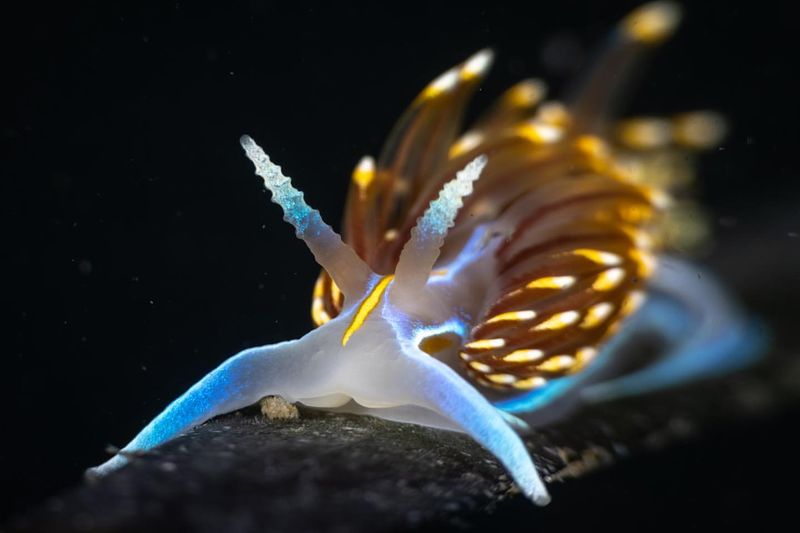
In the vibrant tapestry of coral reefs, the nudibranch adds a splash of color with its flamboyant appearance. These sea slugs, adorned with bright hues and intricate patterns, are nature’s fashionistas, turning heads wherever they go.
But there’s more to the nudibranch than its vivid looks. These creatures can absorb toxins from their prey and incorporate them into their own defenses. It’s a clever strategy that turns them into walking deterrents for predators.
The nudibranch’s ability to flaunt its colors while packing a toxic punch makes it a standout in the ocean’s diverse cast of characters. Its unique adaptations are a reminder of the lengths evolution will go to ensure survival in the wild.
12. Parrotfish
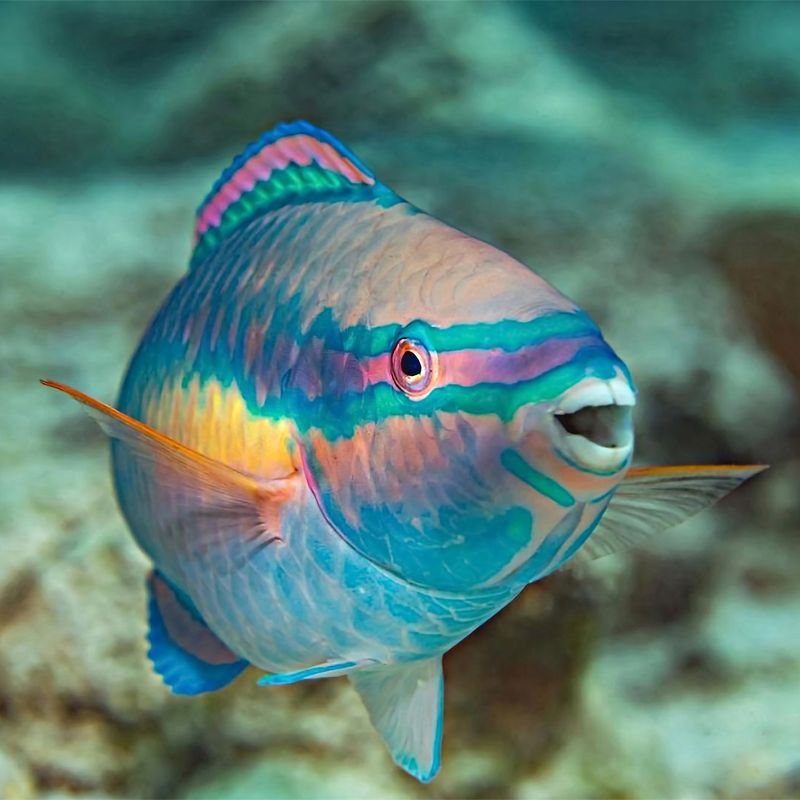
In the bustling ecosystem of coral reefs, the parrotfish stands out with its vibrant colors and beak-like mouth. This unique adaptation allows it to bite into coral, feeding on the algae within. By doing so, parrotfish play a crucial role in maintaining the health of reefs.
As they munch on coral, parrotfish help control algae populations, preventing them from overtaking the reefs. This activity aids in coral growth and ecosystem balance, making the parrotfish an unsung hero of the ocean.
Beyond their ecological contributions, parrotfish bring a splash of color and charisma to the underwater world. Their ability to shape and sustain their environment highlights the interconnectedness of marine life and the importance of each species in the grand tapestry of the sea.
13. Great White Shark
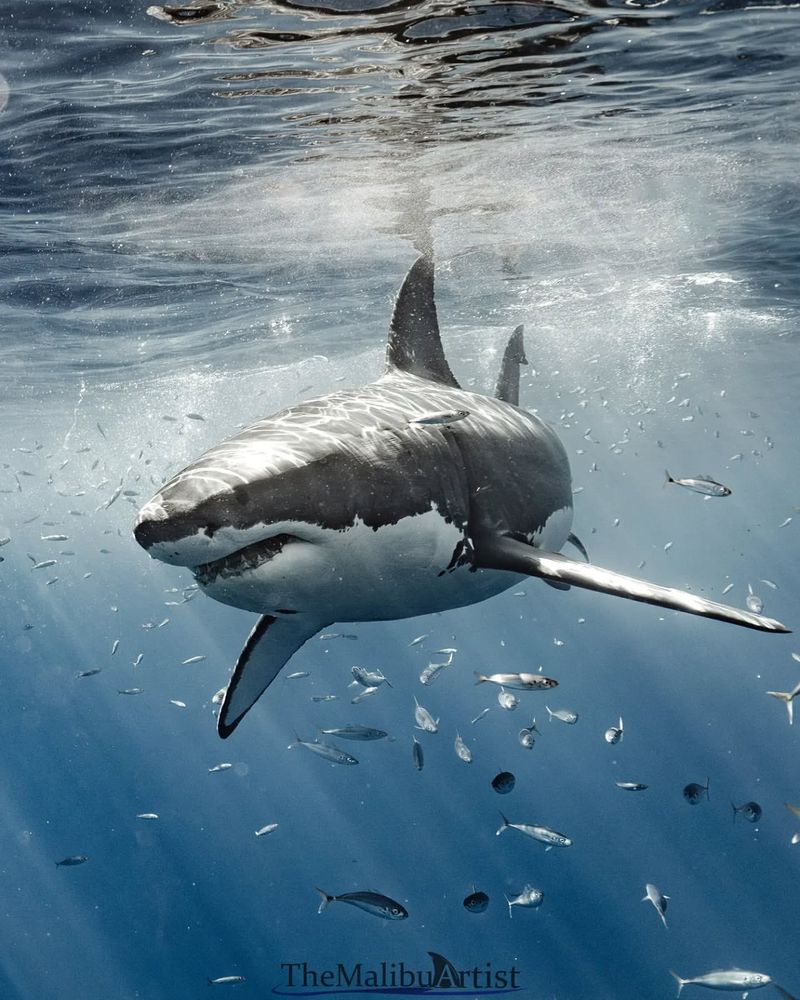
Ruling the ocean with an air of mystery, the great white shark is a symbol of power and prowess. Its sleek body and formidable jaws make it a top predator, striking fear and awe in equal measure. The great white’s keen senses, particularly its acute sense of smell, allow it to detect prey from miles away.
This heightened perception is key to its hunting success, earning it the title of apex predator in the marine world. Despite its fearsome reputation, the great white shark is a marvel of evolution.
Its ability to adapt to various oceanic conditions makes it a survivor, worthy of admiration and respect. In the vast expanse of the sea, the great white is a testament to nature’s power and ingenuity.
14. Clownfish
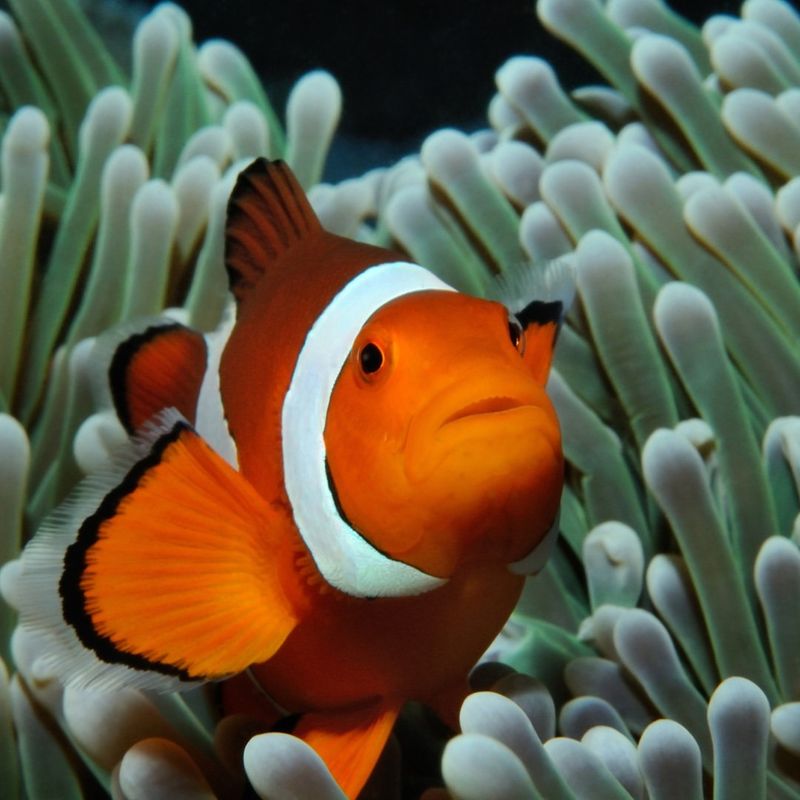
In the vibrant world of coral reefs, the clownfish is a fish that knows how to clown around. Its playful dance among the tentacles of sea anemones is a sight to behold. This relationship is mutualistic; the clownfish gains protection, while the anemone benefits from food scraps.
The clownfish’s bright colors might suggest vulnerability, but its partnership with the anemone offers a haven from predators. The fish’s mucous coating prevents it from being stung, allowing it to navigate its host’s potentially deadly embrace safely.
This symbiotic relationship highlights the clownfish’s ability to thrive in the complex web of reef ecosystems. Its adaptability and vibrant presence make it a beloved character in the ocean’s diverse narrative.
15. Humpback Whale
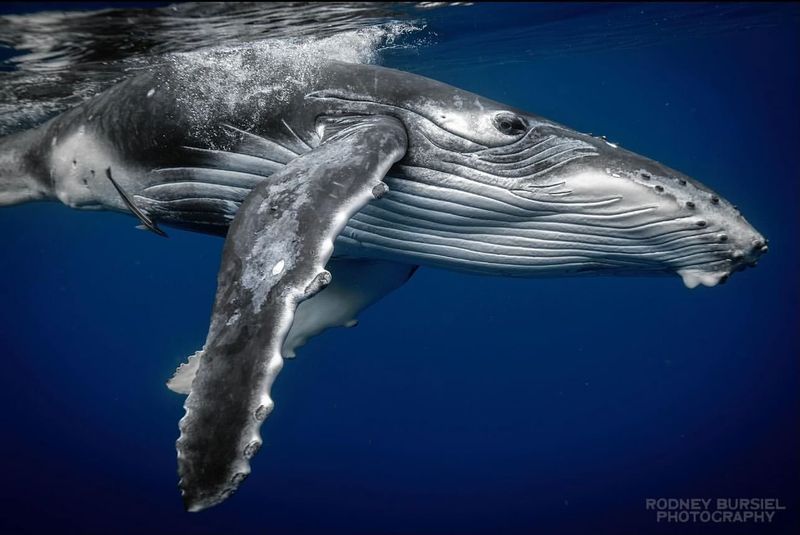
In the grand stage of the ocean, the humpback whale is a performer of the highest order. Known for its acrobatic breaches and complex songs, this giant of the sea captivates with its grace and intelligence. The humpback whale’s long migrations are a testament to its endurance and adaptability.
Traveling thousands of miles between feeding and breeding grounds, it navigates the vast ocean with ease and precision.
Beyond its size and strength, the humpback whale’s communication skills are a marvel. Its songs, thought to play a role in mating, echo through the ocean, adding a lyrical quality to the underwater world. This majestic creature is a symbol of the ocean’s beauty and mystery.
16. Blue Ringed Octopus
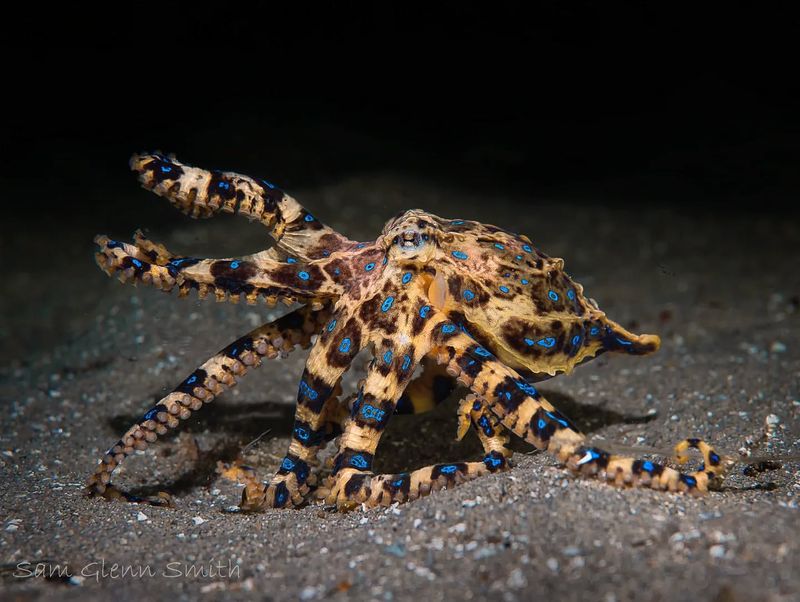
In the tidal pools of the ocean, the blue-ringed octopus is a small yet formidable creature. Its vibrant blue rings serve as a warning to predators, announcing the presence of a potent venom that can be deadly to humans.
Despite its size, this octopus packs a powerful punch. Its venom contains tetrodotoxin, one of the most dangerous toxins in the natural world. The blue-ringed octopus uses this chemical defense to deter threats and protect itself.
While its striking appearance might catch the eye, it’s the blue-ringed octopus’s adaptability and resilience that truly astound. It navigates the challenges of its environment with ease, embodying the extraordinary capabilities of ocean life.
17. Sea Turtle
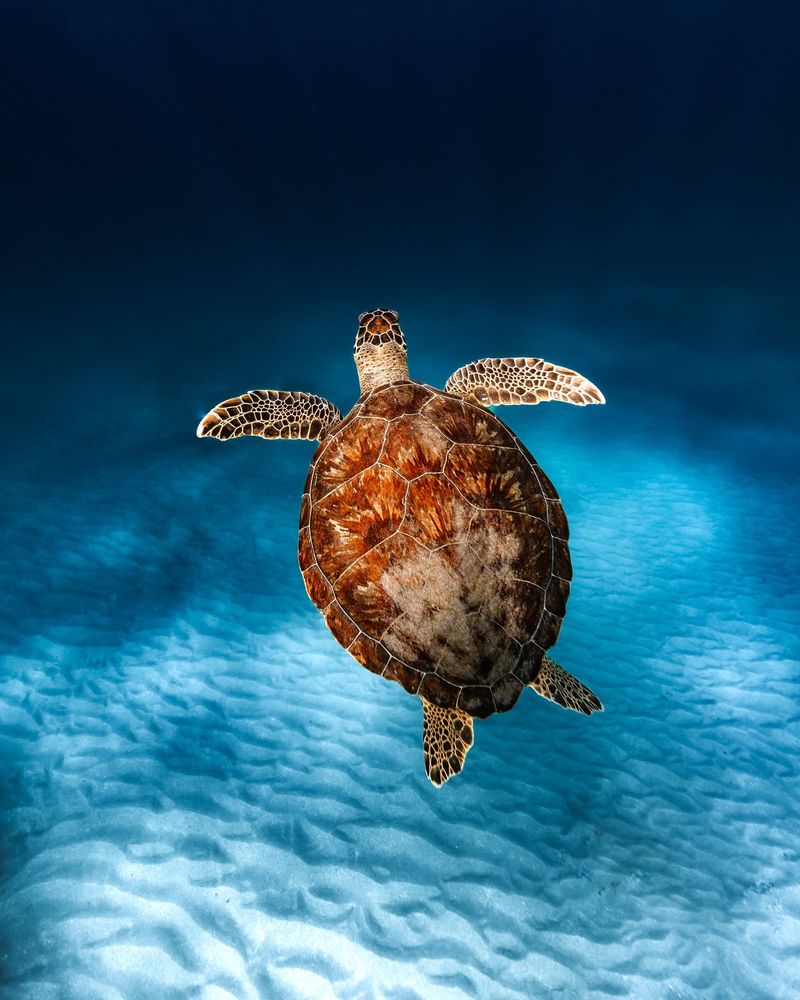
Navigating the ocean with grace and determination, the sea turtle is a timeless traveler of the waves. These majestic reptiles embark on epic journeys, migrating across vast distances to lay their eggs on sandy beaches.
The sea turtle’s adaptability is evident in its varied diet and ability to thrive in different marine environments. From jellyfish to seagrass, it consumes a range of foods that sustain its long migrations.
Sadly, sea turtles face many threats, from pollution to climate change. Yet, their resilience and ability to adapt offer hope for conservation efforts. These ancient mariners remind us of the enduring spirit of the ocean and the importance of preserving its wonders for future generations.
18. Sailfish
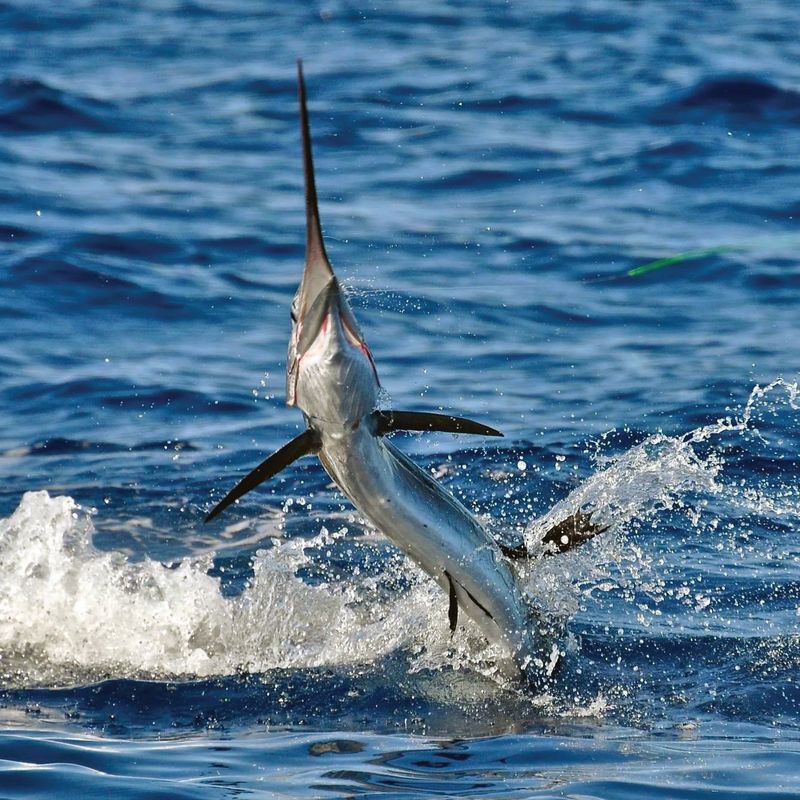
Regarded as one of the fastest fish in the ocean, the sailfish is a speedster of the sea. Its streamlined body and impressive dorsal fin allow it to reach speeds of up to 68 miles per hour. This remarkable agility helps the sailfish hunt effectively, using its speed to outpace and outmaneuver prey.
Its ability to change direction swiftly makes it a formidable predator in the marine environment. Beyond its athletic prowess, the sailfish is a striking sight in the ocean. Its shimmering body and iconic dorsal fin make it a favorite among anglers and ocean enthusiasts alike.
The sailfish embodies the excitement and dynamism of ocean life.
19. Lionfish
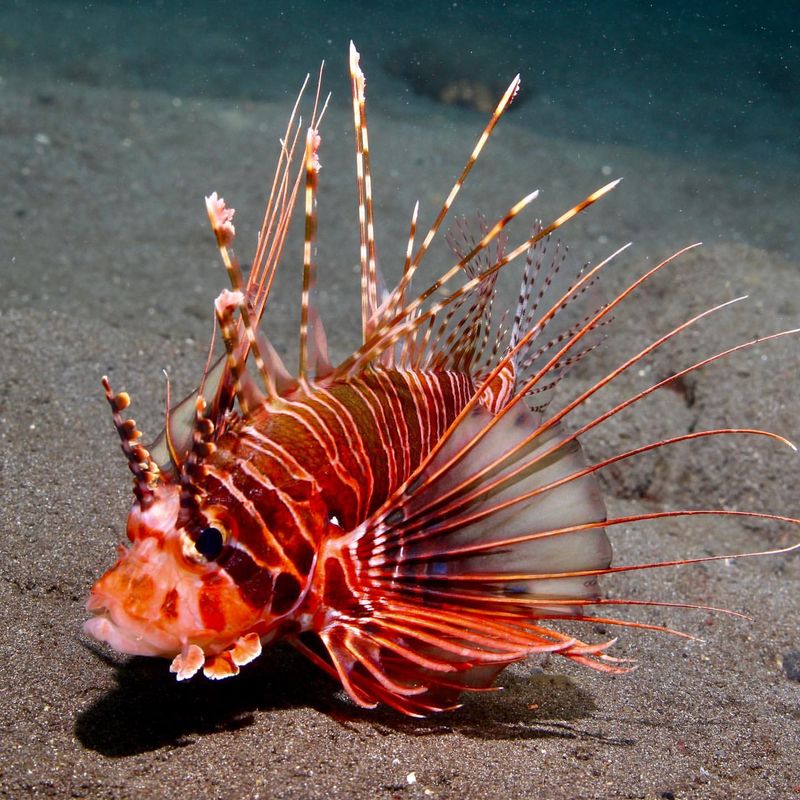
In the intricate tapestry of coral reefs, the lionfish is both a beauty and a beast. Its striking appearance, with bold stripes and venomous spines, gives it an air of regality while warning would-be predators to keep their distance.
The lionfish’s venomous spines deter predators, ensuring its dominance in the reef ecosystem. However, its success has led to it becoming an invasive species in some regions, where it disrupts local marine life.
Despite its invasive status, the lionfish’s adaptability and striking appearance make it a fascinating subject of study. Its presence in the ocean underscores the delicate balance of ecosystems and the challenges of maintaining harmony in the natural world.
20. Dolphin
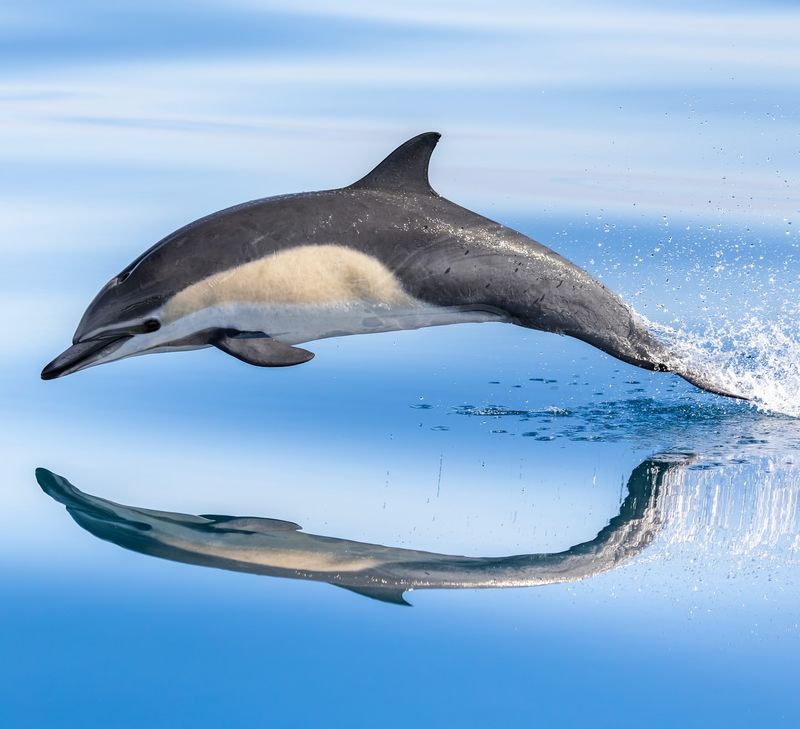
In the sunlit waters of the ocean, the dolphin is a symbol of intelligence and playfulness. Known for their acrobatic leaps and complex social structures, dolphins captivate with their charm and wit. These marine mammals are highly intelligent, using echolocation to navigate and hunt with precision.
Their communication skills are sophisticated, allowing them to convey a range of emotions and information. Beyond their cognitive abilities, dolphins are compassionate creatures, often seen aiding injured members of their pod.
Their adaptability and social nature make them one of the most beloved creatures of the sea, embodying the ocean’s spirit of cooperation and wonder.
21. Moray Eel
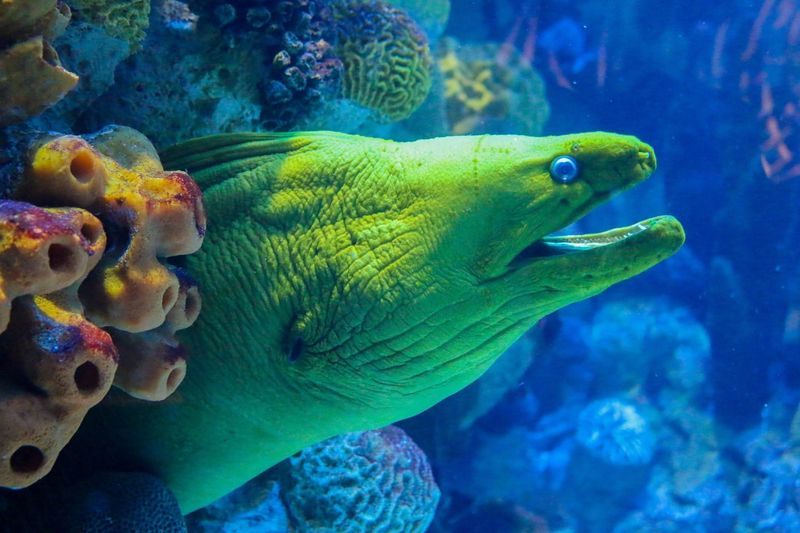
In the crevices of coral reefs, the moray eel lurks with a menacing grin. Its elongated body and sharp teeth make it a fearsome predator, capable of snatching unsuspecting prey with lightning speed.
The moray eel’s unique hunting strategy involves waiting patiently in its hiding spot, lunging out to catch prey with a quick strike. This ambush technique ensures its success in the complex maze of the reef.
Despite its fearsome reputation, the moray eel is an essential part of the reef ecosystem. Its role as both predator and prey contributes to the delicate balance of marine life, showcasing the interconnectedness of ocean habitats.
22. Swordfish
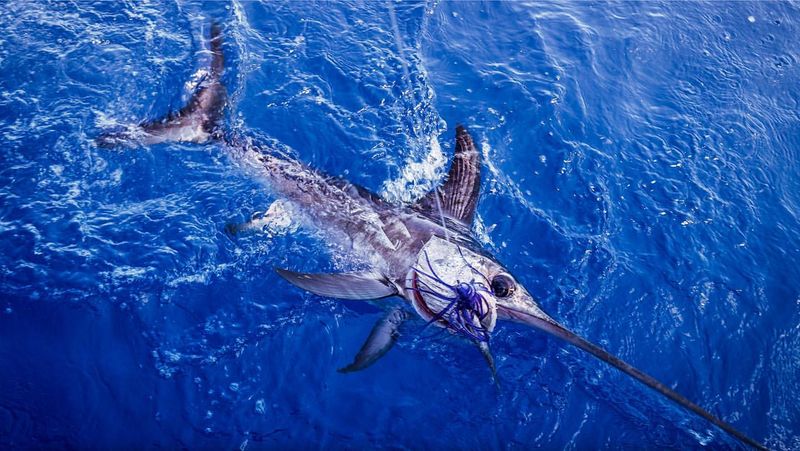
Slicing through the ocean with precision, the swordfish is a marvel of speed and agility. Its elongated bill, resembling a sword, is both a tool and a weapon, used to slash through schools of fish with ease.
The swordfish’s streamlined body allows it to reach impressive speeds, making it a formidable hunter in the vast ocean. Its ability to cut through water with minimal resistance showcases the efficiency of its design.
Beyond its hunting prowess, the swordfish is a symbol of strength and resilience. Its adaptability to various oceanic conditions highlights its role as a top predator and a testament to the power of evolution in shaping marine life.
23. Sea Urchin
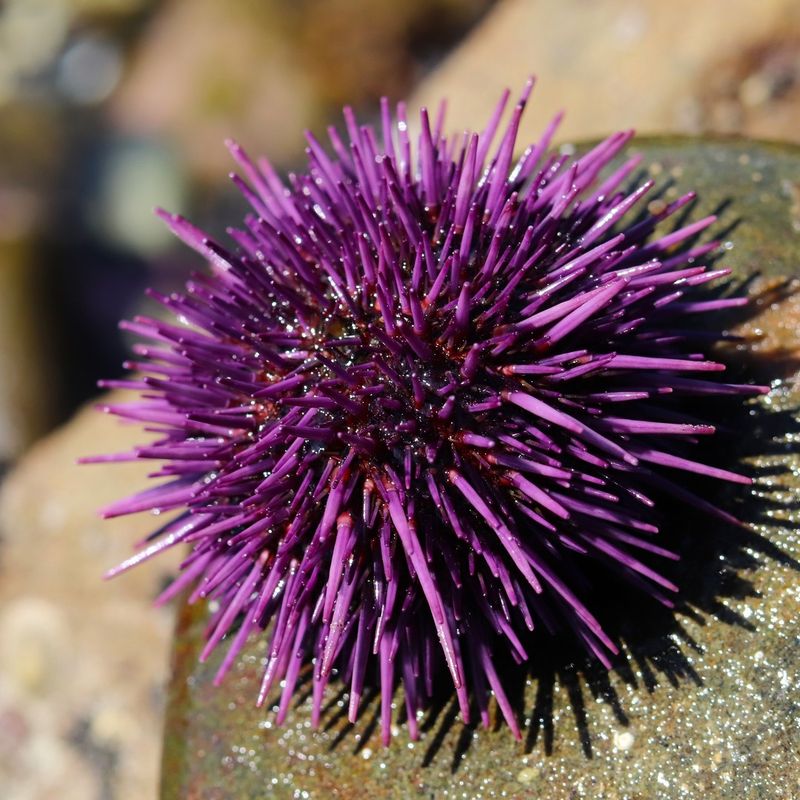
Nestled among the rocks of the ocean floor, the sea urchin is a spiky sentinel of the sea. Its armor-like exterior deters predators, offering protection in the ever-changing marine environment.
The sea urchin’s spines are not just for defense; they aid in locomotion, allowing it to navigate the rugged terrain of the ocean floor.
This unique adaptation ensures its survival in various underwater habitats. Despite its prickly appearance, the sea urchin plays a crucial role in the marine ecosystem. By grazing on algae, it helps maintain the balance of coral reefs, highlighting its importance in the delicate dance of ocean life.
24. Orca
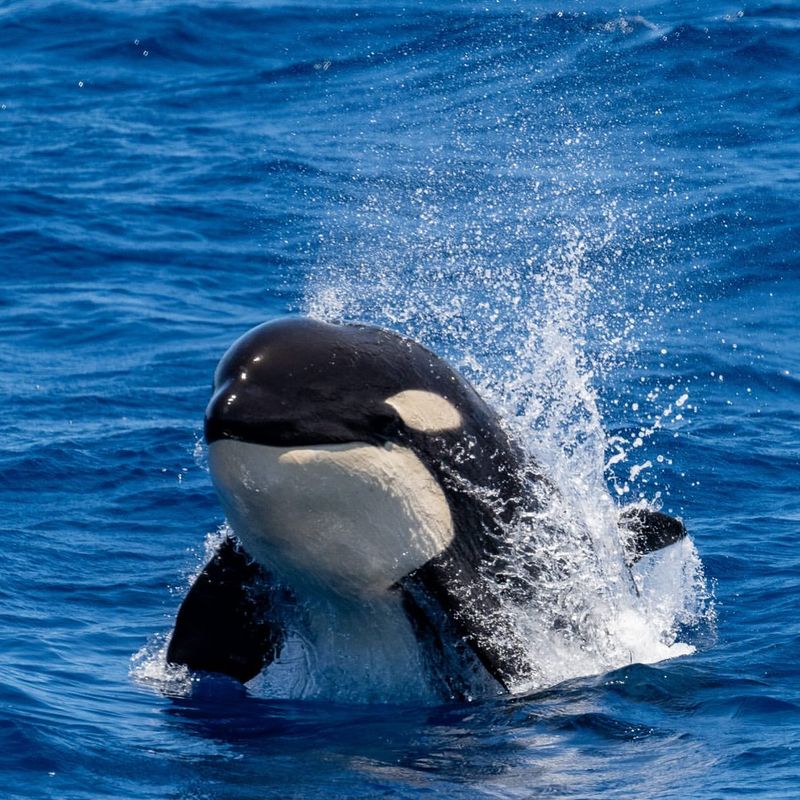
Known as the “wolves of the sea,” orcas are apex predators with a sophisticated social structure. These intelligent mammals live in pods, working together to hunt and navigate the ocean. Orcas are known for their diverse diet and hunting techniques, often using teamwork to capture prey.
Their adaptability to various marine environments underscores their prowess as top predators. Beyond their hunting skills, orcas are known for their complex vocalizations and social bonds.
These majestic creatures embody the strength of community and cooperation, making them a symbol of the ocean’s rich and diverse life forms.
25. Starfish (Sea Star)
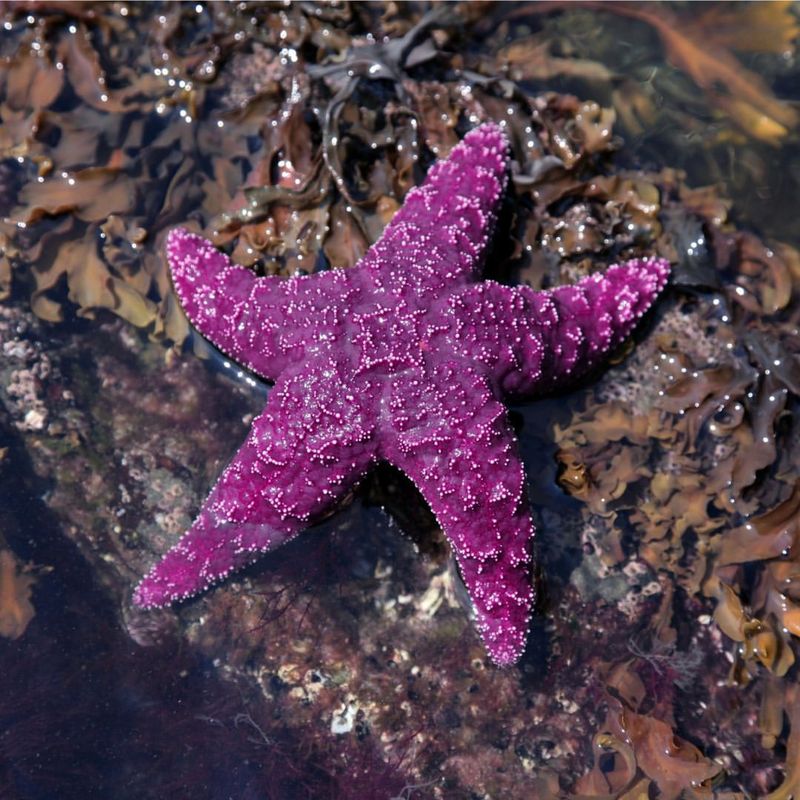
Amidst the vibrant coral reefs, the starfish is a symbol of resilience and regeneration. With the ability to regrow lost limbs, these echinoderms showcase one of nature’s most remarkable survival strategies.
The starfish’s unique ability to regenerate not only aids in its survival but also contributes to the health of reef ecosystems. As they feed on algae and other organisms, starfish play a role in maintaining ecological balance.
With their distinctive shape and regenerative powers, starfish capture the imagination of ocean enthusiasts. They remind us of the wonders of the sea and the endless possibilities of adaptation in the natural world.
26. Mantis Shrimp
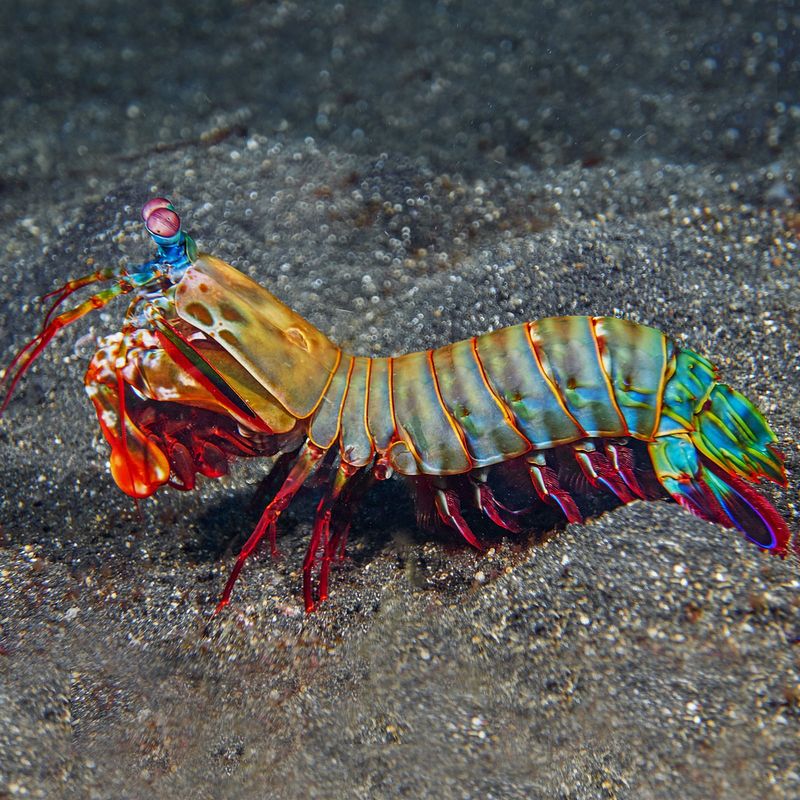
In the intricate world of coral reefs, the mantis shrimp stands out with its vibrant colors and formidable claws. Known for its extraordinary vision, this crustacean can see polarized light and a range of colors beyond human perception.
The mantis shrimp’s claws are its most formidable weapons, capable of delivering one of the fastest strikes in the animal kingdom. This powerful punch is used to crack open shells or deter predators, showcasing the shrimp’s strength and agility.
With its unique visual and physical abilities, the mantis shrimp is a marvel of the marine world. Its adaptability and striking appearance make it a fascinating subject of study, highlighting the diverse forms of life that thrive beneath the waves.






